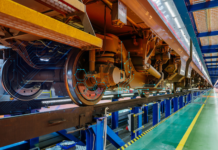Bhubaneswar, the capital city of Odisha, is known for its rich cultural heritage, modern infrastructure, and rapid development. Its history dates back over 2,000 years, originally known as “Tosali,” the capital of ancient Kalinga. Designed by German architect Otto Königsberger in 1946, Bhubaneswar is one of India’s first planned cities.
Bhubaneswar has emerged as a hub for IT, education, and healthcare. Its economy is primarily driven by the tertiary sector, which includes trade, commerce, and tourism. Establishments like “Infocity” have attracted IT companies, making Bhubaneswar an emerging tech hub. The city hosts numerous educational institutions and healthcare facilities sustaining both local and neighbouring states.
Bhubaneswar, with a population of approximately 1,257,000, is experiencing an annual growth rate of 2.2%, leading to a projected population of 1,541,000 in the near future. To address the demands of this growing urbanisation, the city recognised the need for an efficient transportation system. This requirement led to the conception of the Bhubaneswar Metro Project, aimed at enhancing the city’s transport infrastructure and efficiently accommodating the increasing population.
Bhubaneswar Metro: From Conception to Reality
27 July 2010: The Odisha State Transport Department requested the Delhi Metro Rail Corporation (DMRC) to survey the possibility of a metro rail connecting Bhubaneswar and Cuttack.
8 January 2013: E. Sreedharan, Principal Advisor of DMRC, stated that a metro rail system was unsuitable for Bhubaneswar due to the city’s population being below 2 million.
9 January 2013: Engineering Projects India Ltd. proposed a monorail project between Bhubaneswar and Cuttack to the state government.
23 August 2014: The Odisha state government signed a contract with Balaji Railroad Systems Ltd. (BARSYL) to prepare a Detailed Project Report (DPR) for a 30 km Mass Rapid Transit System (MRTS) between Bhubaneswar and Cuttack. BARSYL was allotted ₹2.52 crore for the project, to be submitted in ten months.
January 2018: Odisha Chief Minister (CM) Naveen Patnaik demanded metro rail connectivity between Cuttack and Bhubaneswar.
June 2019: The Governor of Odisha stated that the government would explore metro train connectivity between Cuttack and Bhubaneswar.
April 2023: Odisha CM Naveen Patnaik approved the metro train proposal connecting Cuttack, Bhubaneswar, Khordha, and Puri. The CM directed the Housing and Urban Development Department to expedite the DPR preparation, with the state government funding the entire project.
August 2023: Delhi Metro Rail Corporation (DMRC) was tasked with preparing the DPR for the metro project.
October 2023: Odisha CM Naveen Patnaik approved the DPR for the metro project, with a total project cost of ₹ 6255.94 Crore.
November 2023: Delhi Metro Rail Corporation (DMRC) was appointed as the consultant for the Bhubaneswar Metro project.
Foundation Stone for Bhubaneswar Metro
The former CM of Odisha, Mr Naveen Patnaik, laid the foundation stone for the Bhubaneswar Metro project on 1 January 2024.
Financing Mechanism: The Bhubaneswar will cost about ₹ 6255.94 Crore. The project will solely be funded by the Odisha Government.
Deadline: 48 Months
Phase 1
Phase 1 of the Bhubaneswar Metro features an elevated corridor covering a total distance of approximately 26.024 km, connecting Biju Patnaik International Airport in Bhubaneswar to Trisulia in Cuttack through 20 stations.
Depot: Phulapokhari Depot
Stations: Biju Patnaik International Airport, Capital Hospital, Bapuji Nagar, Bhubaneswar Railway Station, Ram Mandir Square, Vani Vihar, Acharya Vihar, Jaydev Vihar, Xavier Square, Rail Sadan, District Centre, Damana Square, Patia Square, KIIT Square, Nandan Vihar, Raghunathpur, Nandan Kanan Zoological Park, Barang, Phulapokhari and Trisulia Square
Key Specification Of Bhubaneswar Metro
| Rolling Stock Composition | 3 Coach Train Set |
|---|---|
| Carrying Capacity of Each Train Set: | 764 Persons |
| Speed and Track: | Maximum speed: 80 Km/h Average speed: 34 Km/h Track Gauge: Standard Gauge Track measuring 1435 mm |
| Electrification: | Bhubaneswar Metro will be powered by 750V DC Third Rail |
| Signalling: | Continuous Automatic Train Control System (CATC) |
| Estimated Cost: | ₹ 6255.94 Crore. |
Bhubaneswar Metro Project Timeline
| 1 April 2023 | The project was officially announced by Odisha Chief Minister Naveen Patnaik. |
|---|---|
| 26 April 2023 | DMRC was officially appointed to prepare the DPR for the project |
| July 2023: | DMRC initiated soil testing for Bhubaneswar Metro. |
| 16 August 2023: | DMRC submitted the complete DPR to the Bhubaneswar Metro Rail Corporation ( BMRCL). |
| 1 January 2024 | The foundation stone for Phase 1 of the Bhubaneswar Metro was laid at Trisulia Square. |
Contractor’s list:
| Contractor name | Contract detail |
| Ranjit Buildcon Ltd. | BBC-03: design and construction of an elevated viaduct and 6 stations from Capital Hospital to Acharya Vihar Square |
| Ranjit Buildcon Ltd. | BBC-04:designing and constructing the elevated viaduct and 7 stations between Jaydev Vihar Square and KIIT Square. |
| MIA Construction Pvt. Ltd. | BBC-02:Construction of Phulapokhari Depot’s Cum Workshop, OCC Buildings including Plumbing, Drainage, External Development Works ETC. |
| Ceigall India Ltd. (CIL) | BBC-05: design and construction of the Elevated Viaduct and 6 from Nandan Vihar to Trisulia Square, excluding architectural finishing |
Advantages of Bhubaneswar Metro
1. Reduced Traffic Congestion: Bhubaneswar City is witnessing rapid urbanisation, which is why the city is showing growing population trends. The introduction of the metro network will minimise road congestion and reduce the city’s residents’ dependence on private vehicles while ensuring a more convenient and safe mode of transport for the city’s residents.
2. Enhanced Connectivity: Bhubaneswar is emerging as a major hub for economic and educational activities. The strategically planned metro system will connect prominent places with residential areas, which will result in enhanced accessibility for Bhubaneshwar residents to commute to work and educational institutions much more conveniently.
3. Economic growth: The construction and operation phase of the Metro system will generate employment in the city, leading to a rise in its economic growth rate. This will attract more businesses to the city around metro stations, encouraging local economies.
4. Integration with other modes of transport: The project will also provide connectivity to the other modes of transport. This integration will enhance the convenience for commuters, making the metro a more attractive option for daily travel. Effective multimodal connectivity is expected to boost ridership and support the city’s overall transportation network.
Challenges in Bhubaneswar Metro
1. Ridership Concerns: Bhubaneswar City’s smaller population compared to larger metropolitan areas raises concerns for the sustainability of the project with such substantial investments. Many metro systems in India are failing to meet their ridership projection. For instance, cities like Lucknow and Jaipur have reported ridership at only 8.6% and 7.6% of their projections, respectively.
According to a report published by IIT Delhi on 4 December 2023, Delhi Metro achieved only 47% of its projected ridership. This generates a concern regarding the ridership level and long-term sustainability of the Bhubaneswar metro.
2. Financial constraints: The Odisha government has committed to funding the entire cost of the project, but ensuring financial sustainability during the project’s span remains a concern. For example, Chennai Metro reported a net loss of ₹714 crore against an income of ₹183 crore, while Bengaluru faced losses amounting to ₹498 crore on a revenue of ₹536 crore. Securing adequate funding and managing the budget effectively will be crucial for a successful execution.
3. Land Acquisition: The Bhubaneswar Metro’s route will be entirely elevated. Securing land for the construction can be a major challenge, further delaying the project and increasing its costs.
4. Affordability: Bhubaneswar is considered sensitive in terms of socio-economic factors. Ensuring that metro fares remain affordable to residents will be essential for encouraging a modal shift from private vehicles to public transport
Conclusion:
The Bhubaneswar Metro Project represents a critical step in addressing the city’s growing urbanisation and transportation needs. With a focus on enhancing connectivity, reducing congestion, and strengthening economic growth, the project promises to reshape Bhubaneswar’s infrastructure. However, challenges such as ridership concerns, financial sustainability, land acquisition, and fare affordability must be carefully managed.
The success of the metro system will depend on overcoming these hurdles while ensuring efficient integration with other modes of transport. If implemented effectively, the Bhubaneswar Metro could streamline the city’s transit landscape and quality of life for its residents.






